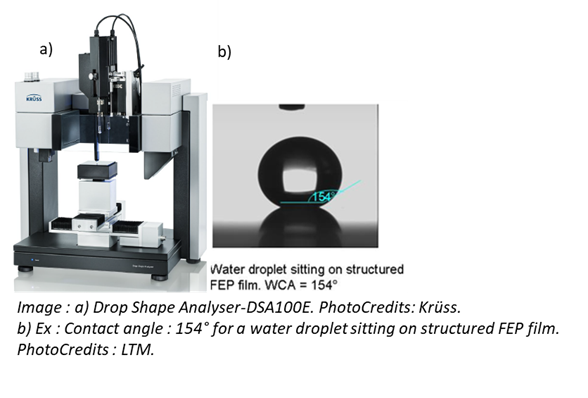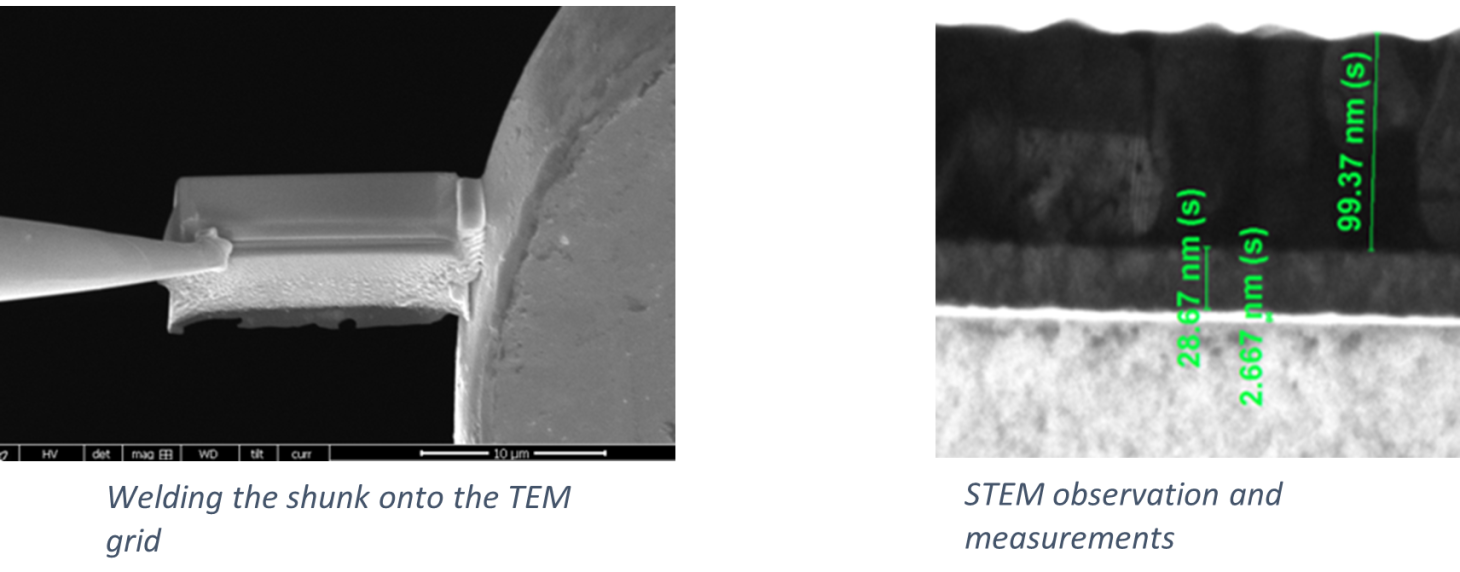- Share
- Share on Facebook
- Share on X
- Share on LinkedIn
The GECCO 200-300 platform is equipped with a variable-angle spectroscopic ellipsometer (Horiba-Jobin Yvon) coupled with a heating plate for measuring optical indices and material layer thickness. It also enables the characterization of structured periodic profiles using scatterometry metrology.
Additionally, the platform features a Krüss DSA100 drop angle measurement system for analyzing the wetting properties of solid surfaces in various environments. This system precisely measures:
- the static contact angle between a water droplet and a solid surface,
- advancing and receding angles,
- surface energy.

A Leica DM3XL optical microscope is also available, equipped with a 150 × 150 mm manual stage (compatible with 200 and 300 mm wafers), objectives ranging from x5 to x100, and a digital camera.
The platform includes a copolymer lithography area with solvent and acid/base fume hood benches.
Finally, the GECCO 200-300 platform is equipped with a HELIOS 450S FIB-SEM (FEI ThermoFischer). This tool is a scanning electron microscope (SEM) equipped with a focused ion beam (FIB), which can be used to precisely machine all materials.

Secondary electron (SE) imaging and backscattered electron (BSE) imaging are possible in situ thanks to various detectors, such as ETD, TLD and CBS, as well as a STEM detector, which allows nanometric resolution in transmission. This provides a direct image of electrons passing through the sample in BF, or according to electron deflection angles ranging from DF to HAADF.
The focused gallium ion beam enables the ablation of all materials and assists in the deposition of carbon, platinum or TEOS with predefined geometries at the submicron scale.
This tool is primarily used for thinning lamellae via FIB machining for ex situ TEM analyses (e.g. EDX, EELS and HRTEM).
The samples we process are obtained by cleaving plates in clean rooms using microelectronics manufacturing techniques.

The instrument is located in the offline characterisation area of the PFNC, a platform supported by CEA institutes (Leti, Liten and Irig). This ecosystem benefits LTM users, as well as doctoral and postdoctoral researchers seeking theoretical and practical training in electron microscopy observation and analysis techniques.
- Share
- Share on Facebook
- Share on X
- Share on LinkedIn